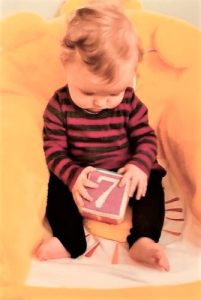
Math! To some adults the word conjures up unpleasant memories of wrestling with percentages, long division, and quizzes on fractions. But most young children enjoy counting, weighing, measuring, and other activities associated with numbers. So how can parents encourage a child’s interest in math and help to promote a positive attitude on the subject?
The Mother’s Almanac by Marguerite Kelly and Elia Parsons, a classic, offers one realistic answer: A child keeps his fresh awareness of mathematics as long as it is applicable and practical. This valuable guide encourages parents to make use of the everyday opportunities to emphasize awareness of numbers.
Following is just a sample of the activities to help make numbers applicable and practical.
Counting. Although many children can count by rote to 100, their grasp of abstract concepts needs to be fostered by practical experiences. Letting a child count out the forks or pieces of cake, one per person, for example, teaches rational accounting, the opposite of parroting numbers. Counting objects, whether they are beans or buses, helps a child to connect the numerals (one, two, three, etc.) with the numbers they represent.
Shapes. Using the names of sphere, cube, triangle, rectangle, etc., to describe objects helps a child recognize likenesses and differences in their daily lives. Children enjoy sorting buttons, making sequences of shells and leaves, and pairing different shaped beads. This heightens the awareness of shapes. Also, playing a game to find parallel or perpendicular lines in a room, or cylinders on a playground, provides practical evidence of various shapes in a child’s daily environment.
Measurements. “Is tomorrow the next day after this?” questioned a four-year-old. Measurement of time and distance are concepts that a child can learn to grasp through practical application. In building with blocks, for instance, a child discovers for himself the relationship of a 4-inch block to an 8-inch or a 12-inch block.
Other measuring activities children enjoy are finding the time it takes to run a 40-yard dash across the yard, measuring the size of the garden and the distance between plants, and measuring the ounces of chocolate chips which go into the cookies. The metric system can be introduced by a continuing game of finding how many places metric units are listed such as on grocery items and road signs.
As children progress in math, they can apply their growing knowledge to more practical situations, such as comparison shopping, double-checking the addition on your receipt, recording expenses on a family trip, or keeping a record of gasoline purchases and mileage. These types of experiences do not guarantee a child will later have an agility for algebra, but they will help to weave the world of numbers into a child’s life.